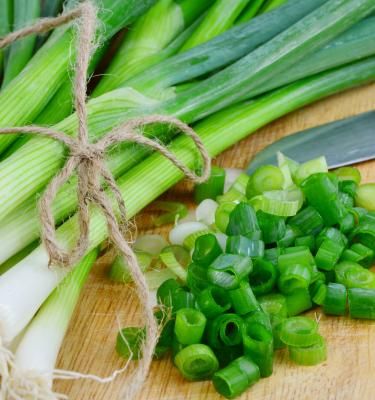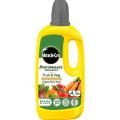

How to plant, grow and care for spring onions
Spring onions (also called scallions, bunching onions and salad onions) are a delicious addition to a whole range of dishes, from summer salads to stir-fries. Harvested before the bulbs start to swell, they have a milder flavour than mature onions, and the whole plant, bulb and leaves, can be used in cooking. Quick to grow, they’re ideal as a filler crop between slower growing vegetables.
Spring onions varieties
Growing spring or salad onions from seed gives you a wide range of varieties to choose from. Here are a few popular varieties to look out for:
- Spring onion ‘White Lisbon’ – quick to mature and ideal for successional sowing through summer. September sowings will last through winter.
- Spring onion ‘Apache’ – a purple-skinned variety with a mild flavour and crisp texture.
- Spring onion ‘Feast’ – a good performer, with excellent tolerance to heat and downy mildew. Good for successional sowing, giving harvests through summer.
What you’ll need to grow spring onions
- Rake
- Garden spade
- Garden fork
- Trowel
- Spring onion seeds
- Well-rotted farmyard manure or soil conditioner
- Granulated fertiliser
- Horticultural fleece
For growing spring onions in pots:
- Container with drainage holes
- Compost
Sowing spring onions
Spring onions are easy to grow from seed and will grow in any fertile, well-drained soil, in full sun. For a continual harvest in summer, sow spring onions at three-week intervals from March to August. To grow spring onions over winter, sow in September and harvest in spring.
- Prepare the soil in autumn for spring sowing by clearing any weeds and stones, and dig in soil conditioner or well-rotted farmyard manure to improve drainage.
- A couple of weeks before sowing, rake in some granulated fertilizer. Tread the soil down and rake it smooth, so that the surface has a fine, crumbly texture.
- Using a stick, the tip of a trowel or the corner of a rake head, draw shallow channels (known as drills) in the ground, 0.5cm (1/4in) deep and 15cm (6in) apart.
- Sow the spring onion seeds thinly in the drills and cover over with soil. Cover the ground with fleece to stop birds pulling up the young seedlings as they appear.
- Sow new seeds every three weeks for a continual supply through summer.
Growing spring onions in pots
To grow spring onions in pots, choose a container with good drainage holes and fill it with good potting compost. Scatter seed over the surface and cover with 1.5cm (1/2in) of compost. Water just enough to moisten the compost.
Growing spring onions in water

If you don’t have space to grow spring onions outdoors, you can re-grow shop-bought spring onions indoors in a jar of water, giving you a readily available supply of tasty leaves for cooking. Here’s how to grow spring onions in water:
- Choose spring onions that have a few roots at the base of the plant.
- Trim the tops of the leaves.
- Place the spring onions in a clear glass jar and fill it with water so that the white bulb ends of the plants are underwater. Place the jar in a sunny position.
- Cut off the green leaves of individual plants as you need them for cooking and leave the bases in the water to regrow fresh leaves.
- Change the water every 2-3 days to keep it fresh.
How to care for spring onions
Water during dry periods, and water container-grown spring onions regularly to keep the compost moist. Don’t over-water, as this could leave the plants prone to diseases like downy mildew.
Weed regularly, preferably by hand, as spring onions have shallow roots which could be damaged by hoeing.
How and when to harvest spring onions
Spring onions are ready to harvest around eight weeks after sowing, when the plants are around 15cm (6in) tall and the bulbs are still small, less than 2.5cm (1in) across. Pull the plants up by hand as you need them, using a hand fork or trowel to help.
Storing spring onions
Spring onions are best used soon after harvesting, but they can be stored in sealed plastic bags in a fridge for up to two weeks.
Alternatively, place your harvested spring onions in a jar of water to keep them fresh until you are ready to use them. You can also use this method to grow shop-bought spring onions in water.
Common spring onion diseases
Onion white rot
Onion white rot is a soil-born fungus that causes leaves to yellow and wilt, and bulbs to rot. Control methods:
- Avoid planting onions in soil where this has previously been a problem.
- No chemical controls are available.
Onion downy mildew
Downy mildew is a fungal disease that can affect the leaves of spring onions, causing blotches on the leaf surface. In severe cases, leaves shrivel and fall off, and plant growth is stunted. It is more common in wet weather.
- Space plants when planting to ensure good air circulation.
- Remove any affected leaves.
- Water in the morning rather than the evening.




